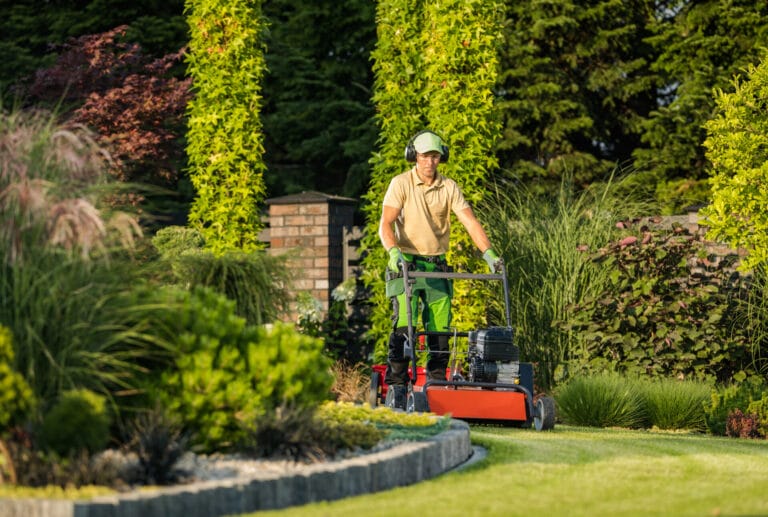A lush, vibrant lawn is the pride of any homeowner, but achieving that verdant perfection requires more than just sporadic mowing. Proper lawn care is a blend of science, art, and dedication. In this comprehensive guide, we’ll delve into the myriad ways you can nurture your lawn to reach its full potential. From essential maintenance tasks to advanced techniques, let’s explore how to transform your patch of grass into a lush green oasis.

Understanding Your Lawn
Before diving into care tips, it’s crucial to understand your lawn’s unique characteristics. Factors like grass type, soil quality, climate, and sun exposure all influence its health and appearance. Conduct a soil test to assess pH levels and nutrient content, providing valuable insights for tailored care. Additionally, identify common grass varieties in your region to tailor your approach accordingly.
Mowing Mastery
Regular mowing is the cornerstone of lawn care, promoting healthy growth and a tidy appearance. Set your mower blades to the appropriate height for your grass type, avoiding overly aggressive cuts that stress the turf. Aim to mow when the grass is dry to prevent clumping and disease spread. Vary mowing patterns to prevent soil compaction and encourage upright growth. Remember the golden rule: never remove more than one-third of the grass height in a single mowing session.
Watering Wisely
Proper hydration is essential for a thriving lawn, but too much or too little water can spell trouble. Water deeply and infrequently to encourage deep root growth, typically providing around 1-1.5 inches of water per week, including rainfall. Water in the early morning to minimize evaporation and fungal growth. Invest in a rain gauge to monitor precipitation levels and adjust watering accordingly. Consider installing a programmable irrigation system for effortless hydration management.
Feeding for Finesse
Like any living organism, your lawn requires nourishment to flourish. Fertilization provides essential nutrients that may be lacking in your soil, promoting healthy growth and vibrant color. Choose a fertilizer blend tailored to your grass type and season, avoiding excessive nitrogen applications that can lead to rapid growth and increased mowing frequency. Apply fertilizer evenly using a spreader, and water thoroughly to activate nutrients and prevent burning.

Weed Warfare
Weeds are the bane of a beautiful lawn, competing for resources and detracting from its appearance. Implement a proactive approach to weed control, including regular inspections and prompt removal of emerging weeds. Manual removal is effective for small infestations, but herbicides may be necessary for larger or persistent weeds. Selective herbicides target specific weed types while sparing your grass, minimizing collateral damage. Remember to follow application instructions carefully to ensure safety and efficacy.
Aeration Advantages
Over time, soil compaction restricts airflow, water penetration, and nutrient absorption, hindering lawn health. Aeration alleviates compaction by removing small plugs of soil, promoting better root development and overall vigor. Schedule aeration in the spring or fall when the grass is actively growing and moisture levels are conducive to recovery. Consider renting a core aerator or hiring a professional service for larger lawns. Follow aeration with overseeding to introduce new grass varieties and fill in thin or bare patches.
Disease Defense
Fungal diseases can quickly derail your lawn care efforts, causing unsightly browning, wilting, and even death. Preventative measures are key to disease management, including proper watering, mowing, and fertilization practices that promote grass resilience. Improve air circulation by pruning overhanging branches and thinning dense vegetation around the lawn perimeter. Monitor for early signs of disease, such as discolored patches or unusual growth patterns, and promptly implement targeted treatments as needed.

Seasonal Strategies
Each season presents unique challenges and opportunities for lawn care. In the spring, focus on revitalizing the turf after winter dormancy with aeration, overseeding, and fertilization. Summer requires vigilant watering and weed control to combat heat stress and invasive species. Fall is the ideal time for core aeration, overseeding, and fertilization to prepare the lawn for winter dormancy. Winter maintenance involves minimizing foot traffic on frozen or dormant grass and addressing any lingering weed or disease issues.
A lush, healthy lawn is within reach for any homeowner willing to invest time and effort into proper care. By understanding your lawn’s needs and implementing a tailored maintenance plan, you can cultivate a verdant paradise that enhances your home’s beauty and value. From mowing and watering to fertilization and weed control, the key is consistency and attention to detail. With these strategies in your arsenal, you’ll be well on your way to lawn care mastery and enjoying the envy of your neighbors.

Desert-Inspired Landscaping That Works in Central Texas
When it comes to landscaping in Central Texas, one of the smartest approaches is to draw inspiration from the desert. With its hot summers, unpredictable

